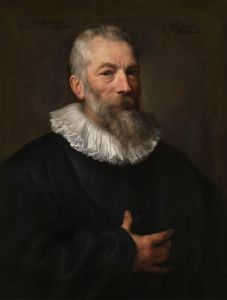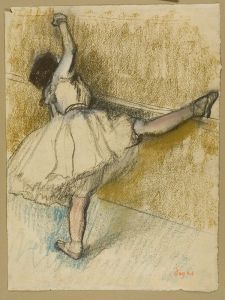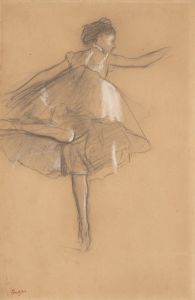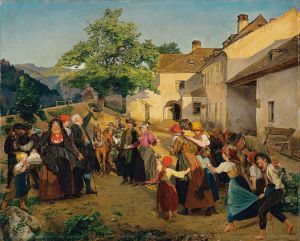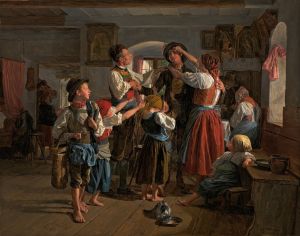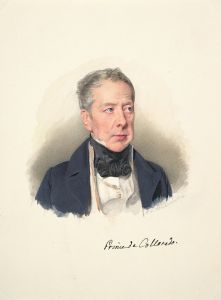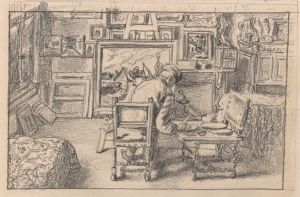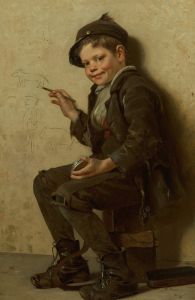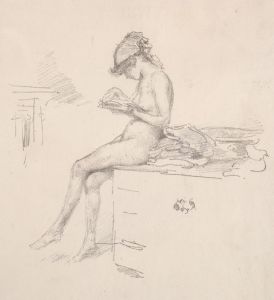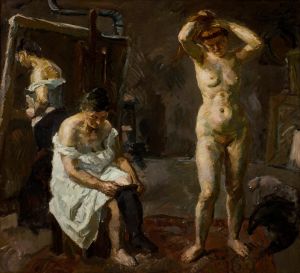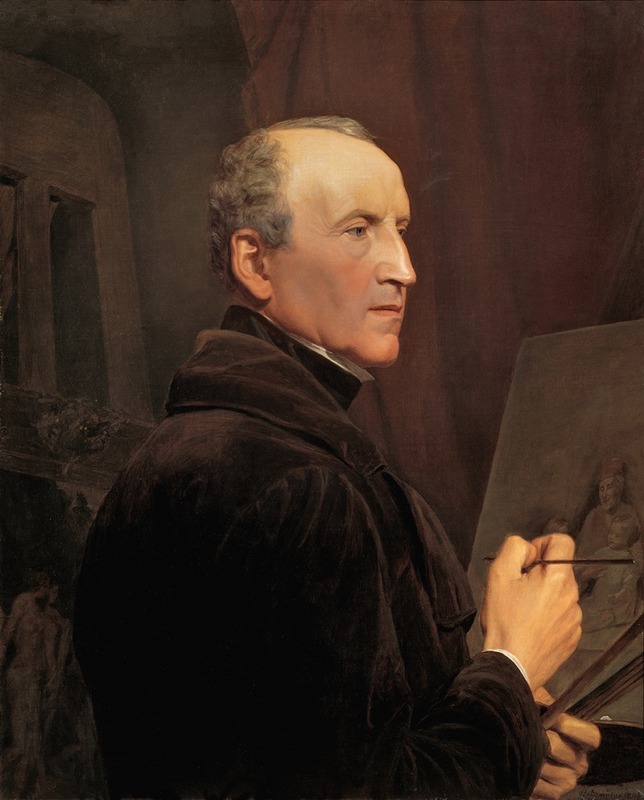
Selbstporträt vor der Staffelei
A hand-painted replica of Ferdinand Georg Waldmüller’s masterpiece Selbstporträt vor der Staffelei, meticulously crafted by professional artists to capture the true essence of the original. Each piece is created with museum-quality canvas and rare mineral pigments, carefully painted by experienced artists with delicate brushstrokes and rich, layered colors to perfectly recreate the texture of the original artwork. Unlike machine-printed reproductions, this hand-painted version brings the painting to life, infused with the artist’s emotions and skill in every stroke. Whether for personal collection or home decoration, it instantly elevates the artistic atmosphere of any space.
Ferdinand Georg Waldmüller was an Austrian painter, renowned for his contribution to the Biedermeier period, a time marked by a focus on realism and detail in art. One of his notable works is "Selbstporträt vor der Staffelei" (Self-Portrait in Front of the Easel), which exemplifies his skill in portraiture and his dedication to capturing the essence of his subjects with precision and clarity.
"Selbstporträt vor der Staffelei" is a self-portrait that showcases Waldmüller’s meticulous attention to detail and his ability to convey the personality and mood of the subject—himself, in this case. The painting depicts Waldmüller standing confidently in front of his easel, a common motif for artists who wish to present themselves in the act of creation. This self-representation not only highlights his identity as an artist but also serves as a testament to his commitment to his craft.
Waldmüller was born on January 15, 1793, in Vienna, Austria. He studied at the Academy of Fine Arts in Vienna, where he honed his skills in drawing and painting. Over the years, he became one of the leading figures of the Biedermeier period, which spanned from 1815 to 1848. This era was characterized by a focus on the middle class and domestic life, often depicted with a sense of tranquility and order.
In "Selbstporträt vor der Staffelei," Waldmüller employs a realistic style that is typical of the Biedermeier period. The painting is marked by its clear lines, balanced composition, and a keen eye for detail. Waldmüller’s use of light and shadow adds depth to the portrait, enhancing the three-dimensionality of the figure and the objects surrounding him. The colors are rich yet subdued, reflecting the naturalistic approach that Waldmüller favored.
The self-portrait not only serves as a reflection of Waldmüller’s artistic abilities but also provides insight into his personality. His expression is calm and focused, suggesting a sense of introspection and dedication. The inclusion of the easel and painting tools in the composition underscores his identity as an artist and his lifelong devotion to painting.
Throughout his career, Waldmüller was known for his portraits, landscapes, and genre scenes. He had a particular talent for capturing the subtleties of human expression and the beauty of the natural world. His works often depicted everyday life with a sense of realism and attention to detail that was unmatched by many of his contemporaries.
Waldmüller’s influence extended beyond his lifetime, as he played a significant role in the development of 19th-century Austrian art. His commitment to realism and his ability to capture the essence of his subjects have earned him a lasting place in art history. "Selbstporträt vor der Staffelei" remains an important work within his oeuvre, exemplifying the qualities that made him a master of his craft.
In summary, "Selbstporträt vor der Staffelei" by Ferdinand Georg Waldmüller is a significant work that reflects the artist’s skill in portraiture and his dedication to realism. Through this self-portrait, Waldmüller not only presents himself as an accomplished artist but also offers a glimpse into the artistic values of the Biedermeier period.





